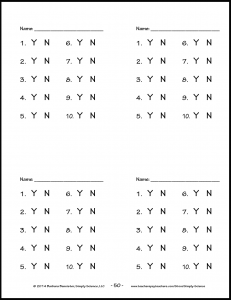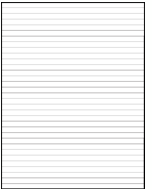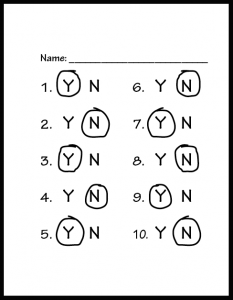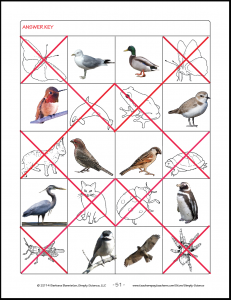 No teacher wants a stack of papers on the desk waiting to be graded days after the assignment or assessment was given. Students need feedback and you need information to guide you as you plan the next lesson.
No teacher wants a stack of papers on the desk waiting to be graded days after the assignment or assessment was given. Students need feedback and you need information to guide you as you plan the next lesson.
One simple suggestion – make a pattern in the answers! Have students grade their own papers. Because you have a pattern in the answers – they won’t know it but you will – you can walk around checking answers as students volunteer the correct answers for the assessments.
Here’s a couple of examples.


In my TPT products for introducing frogs, birds, bugs, whales, and cats, I included a quick assessment that uses a simple recording sheet.
You ask a yes/no question or with these life science units show an image of an animal and ask a question (Is it a bird? Does the animal lay eggs? Is it a primary consumer? Is it an herbivore?). Students circle yes or no on the answer sheet. Click on these links to download a copy of my recording sheets in English or Spanish. Lines can be printed on the back of each quarter sheet for students to answer an essay question.

Just make sure the answers form a pattern
you can check quickly!
 In the same products, there’s a more complex assessment, but I made a pattern for those answers, too! In this example from An Introduction to Birds, you’ll see that the correct answers alternate down the page.
In the same products, there’s a more complex assessment, but I made a pattern for those answers, too! In this example from An Introduction to Birds, you’ll see that the correct answers alternate down the page.
When students color the animals on the page that are birds, the pattern becomes even more obvious – to you!
What are other suggestions for assessing student work quickly?


The fewer papers you have to collect and return, the better. In my middle school math classes — 6 periods a day — I would walk around the room doing spot checks on what I thought were key problems while the students worked on warm-ups. I would either give them a star made by a colored felt marker or ask them to think again or “explain problem #3”. I’d mark it off on a clip board I carried and do a quick check for completeness at the same time. Since the answers to the usual math homework is in the back of the book in middle school, completeness and “show work” are important. If those weren’t in evidence, I’d ask them to bring them back the next day finished and make a note to re-check.
Great suggestions! Thanks for sharing.
Tommy V’s comment on giving students timely feedback made me think of a technique I use not for assessments, but for checking daily work. Sometimes with math worksheets, I correct the work of the first few students who are done, then they become “teacher-checkers” and go around the classroom correcting the work of others who have completed their worksheets. Any student whose work is all correct or who has corrected all errors can become a “teacher-checker.” This frees me to walk around and help those who need some support. Students get immediate feedback on how they did on an assignment, and they like being able to get up and move around.
Fantastic idea! My achilles heel is keeping up with grading and giving students timely feedback. There are studies that show if you don’t give feedback to a student within something like 48 hours, the overall meaningfulness of the project or assignment decreases dramatically. This will help and something I will certainly use in the future (this Friday’s math assessment!!!).
Wonderful idea. Those stacks are often overwhelming. Thank you for a useful piece of advice.